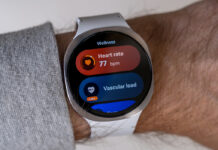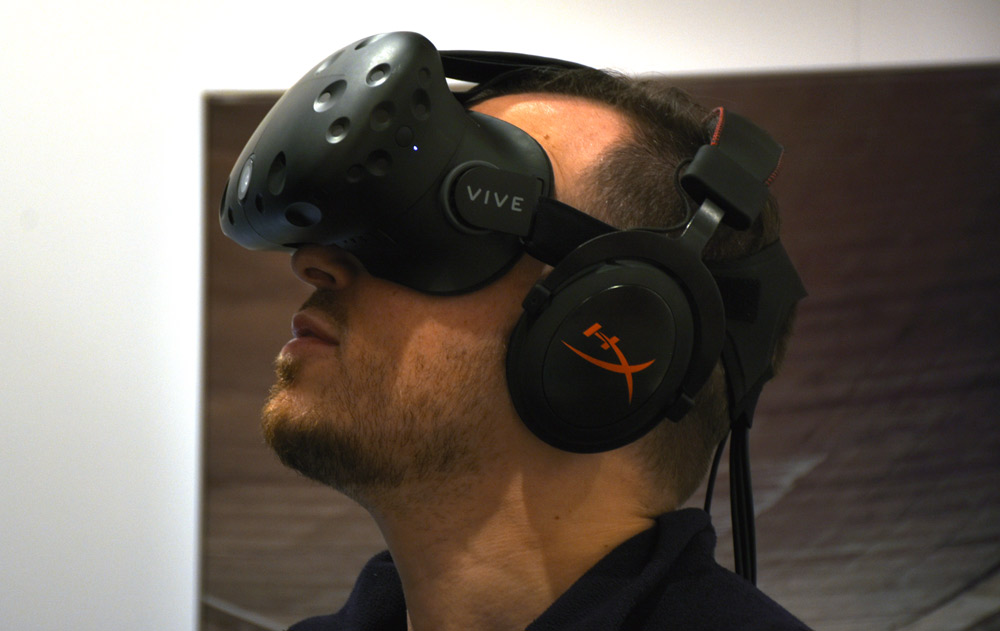
VR, or virtual reality, is a big deal, not just at CES 2016, but in its sheer potential to wow users with the expansive content it’s capable of producing. The HTC Vive is getting closer to reach for consumers, and is among the most intriguing devices at the show this year. I got some extended hands-on time with it, coming away with a good impression.
I had previously tried out an earlier iteration of the Vive only three months ago, so had some experience in how it worked, and how it did what it did. In my demo at CES, the Vive headset was connected via cables to a PC that pushed tons of data through it to produce the virtual enviroments I was interacting with.
Design and setup
HTC has finally settled on a design and aesthetic for the headset, cleaning up the lenses considerably to make it feel less like wearing glasses, and cleaner look on the front. The straps now have less plastic and better adjustable Velcro for a snugger fit. An exposed loop in the back is meant to contour to different head shapes, too. The foam and nose pieces are also adjustable and can be removed and replaced entirely, ensuring some longevity is provided for the device.
The controllers have also gotten plenty of treatment. Much sleeker than what I had used previously, they are still made up of triggers in the back, with a circular trackpad on top and a few buttons below. These are motion-sensitive, of course, and can appear as themselves, a pair of hands or whatever other character or use case the content calls for.
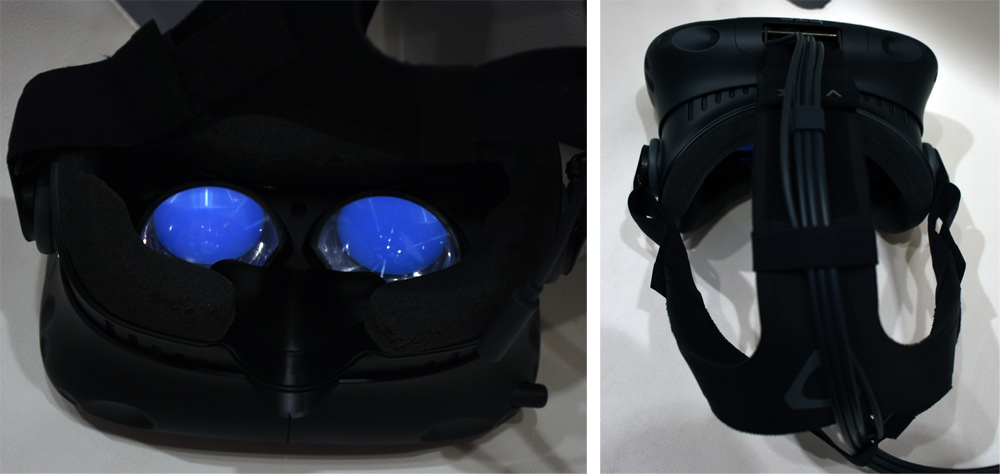
Lastly, two base stations mounted on the wall within 15 feet of each other created a proximity zone using invisible lasers to know where I was. The distance of 15 feet is a maximum, as anything more would create a “dead zone” of useless VR space that doesn’t display anything. Deploying with less distance is fine, according to a product expert I spoke to beforehand.
The base stations created an awareness of the physical limits of the space around me that was visible in the VR world when getting too close to it. When pressing one of the buttons on the controller, the front-facing camera on the headset is also capable of shifting to a live view that let me see the product expert and the rest of the space as outlines so that I knew where everything was.
Content and experience
Each eye has a resolution of 1,200 x 1,080, with 20GB of data transmitted per second. That’s a lot of information going to the headset in a short time. I repeated two of the demos that I had done previously to get a sense of the improvements.
My favourite was standing underwater aboard a shipwreck. I had sunlight peering through the surface, waving away small fish and seeing stingrays glistening as they wove through paying no attention to me. Wearing headphones to go with the headset, I could then hear something, and turned to my left expecting the arrival of a massive blue whale slowly moving toward the ship, it’s huge body seemingly bigger than the ship was. It eventually stopped, looked at me intently, until it eventually swam away, coming close to hitting me with its tail.
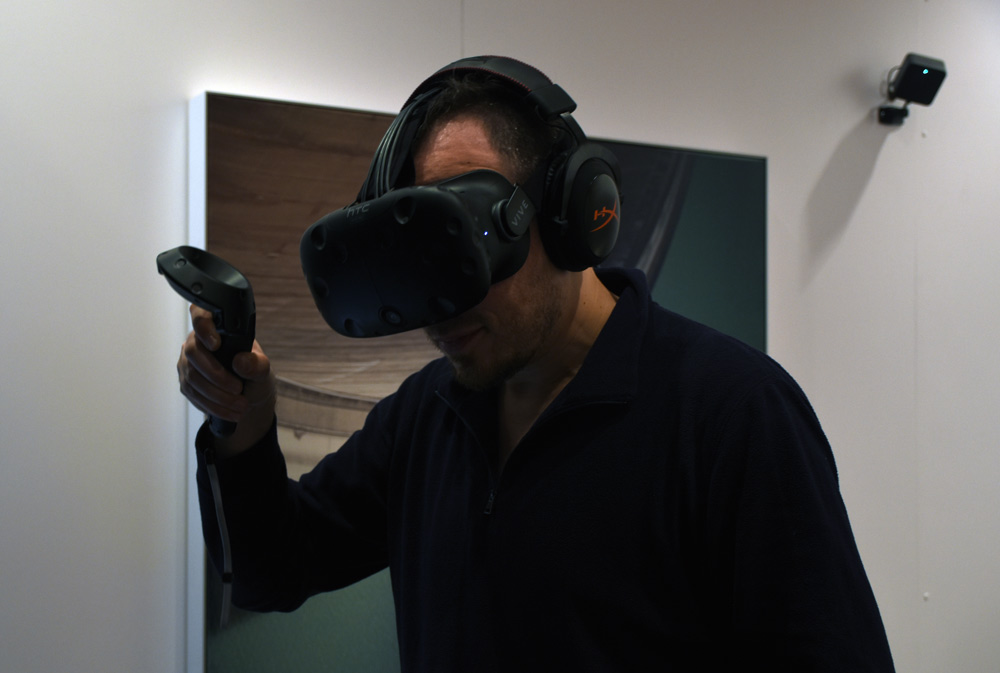
Another had me painting on a 3D canvas in 360-degrees using a palette and various other brushes and tools that I could change on the fly to create whatever I wanted in that space. I first just waved it around, creating some neon mosaic without any real pattern to it, until I found my artistic chops and managed to create the illusion of a still fire from it. It was fun.
A newer one I hadn’t seen had me in an office setting following instructions to perform basic tasks at a cubicle upon instruction from floating robot screens. It was cute in its own way, and demonstrated how the controllers can be used as hands to grab and interact with virtual objects, like opening a filing cabinet or eating a donut.
These were all immersive and interactive, but in revisiting the shipwreck and 3D canvas, I could tell that image quality has been improved, despite nothing technical having been added. The resolution is the same, yet everything appeared cleaner with better colour saturation. I suspect sound will also get a bump up by the time the Vive is ready for launch this spring.
I didn’t feel as tangled with the wire in the back as I had previously, where it was much thicker and heavier. The controllers were also lighter, and now have built-in batteries rechargeable through microUSB (the previous ones I tried required external batteries).
Worth noting is that most homes don’t have empty rooms to enjoy a similar experience. With the base stations, Vive can tell where the walls are located in a room and where objects are situated, helping create awareness of what’s inside to avoid bumping into or knocking things over.
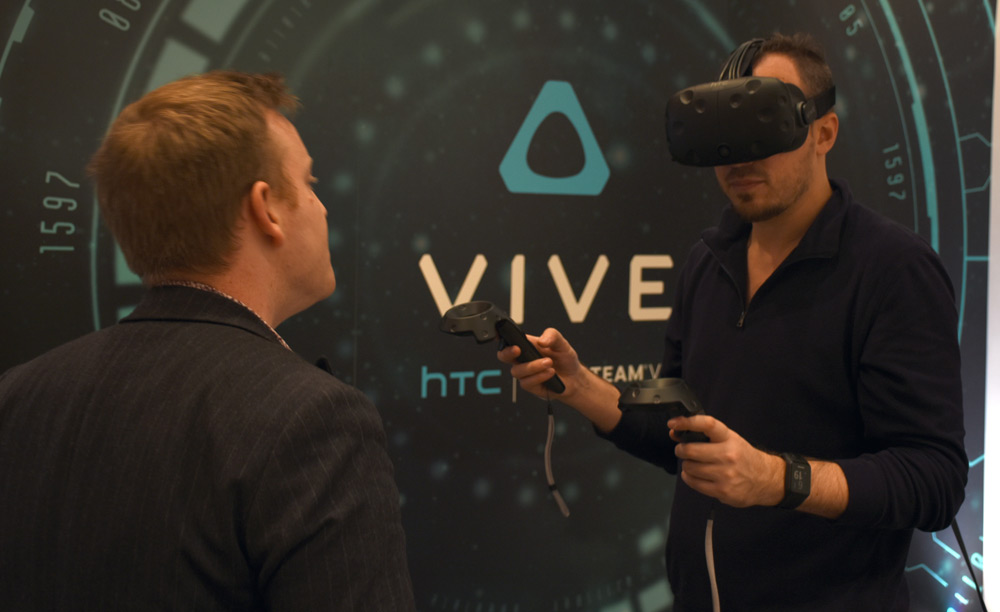
Looking ahead
Looking back, this will be viewed as one of the pioneering eras of VR, even though the technology has been around in some form decades. The Vive will likely be one of the most exciting and interesting VR headsets to launch in Canada this year, and Best Buy will be carrying it. No exact date has been confirmed, as HTC has only noted April as the month it plans to make it available.
Steam plays a role in all this, too, so content should be interesting when that’s finally unveiled. Games will lead the charge, but you expect all types of unique stuff to look at and interact with. Developers will have a little more time now to prepare and get their content ready, given the delay to April, though it’s not known how much will be made available at the time of launch.



